199
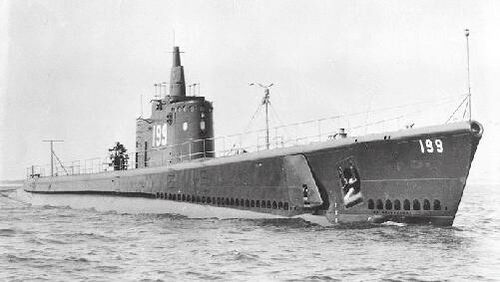
U.S. Navy photo.
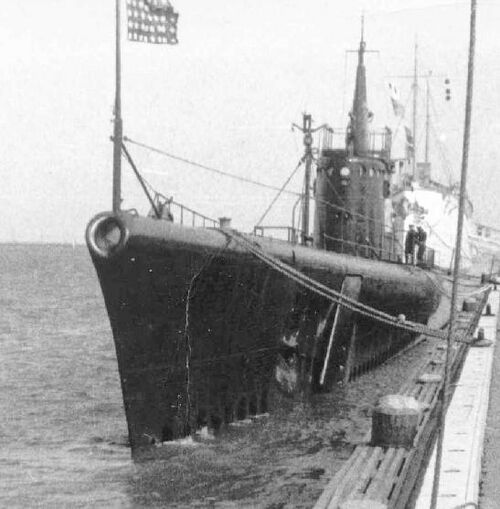
Tautog after commissioning, possibly at the U.S. Naval Academy in Annapolis, MD, 1940. Note the profusion of wires, lifelines, and antennas topside. This would be largely eliminated once the war started.
The white hull ship behind her could possibly be the USS Reina Mercedes (IX-25) or the USS Cumberland (IX-8), both training/barracks ships at the academy. The ship is flying the ball-diamond-ball day shape from her mast on the port side, indicating that she is "restricted in her ability to maneuver". Both ships were immobile.
Photo in the private collection of Ric Hedman.
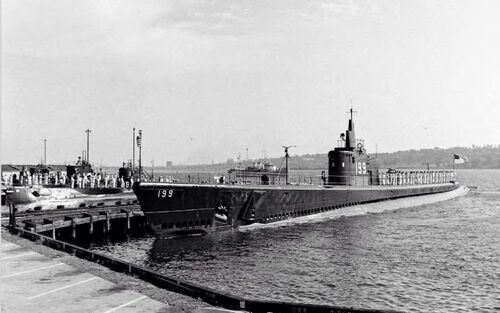
The crew is lined up on Tautog's after deck in August of 1940, anticipating President Franklin Roosevelt's visit to Submarine Base New London, CT. USS R-12 (SS-89) and several other submarines are moored in the background.
Life Magazine photo by Thomas Macvoy via Navsource.org.
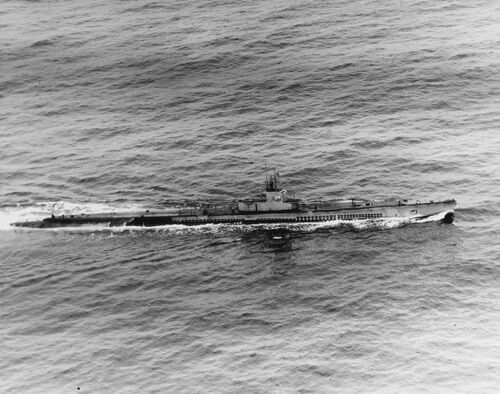
Flashing forward in time, Tautog is shown here shortly after the end of the war. She has received many wartime upgrades, and is configured like a Mod 3 Gato-class. Her war record is proudly displayed on the side of the fairwater.
Photo 80-G-323879 courtesy of the NHHC.
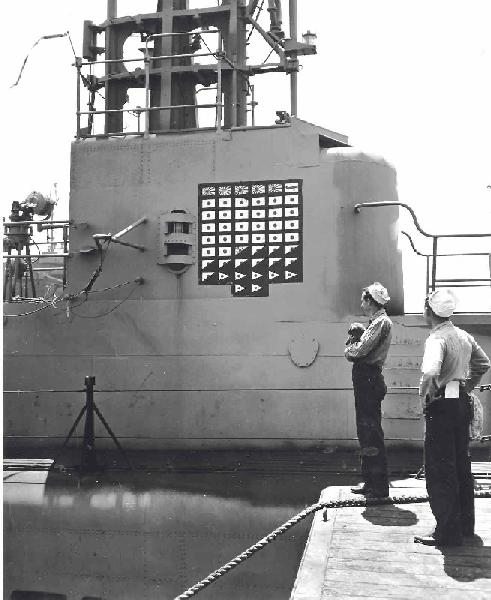
A closer view of Tautog's claimed war record. The Tautog became known as the "Terrible T" because of the number of ships sunk. You can see the airplane flag painted on the con. Tautog was credited with shooting down a Japanese fighter bomber during the Pearl Harbor Raid on December 7, 1941. She lists 31 ships sunk and 18 ships damaged. Post-war analysis reduced this to 26 ships sunk for a total of 72,606 tons.
U.S. Navy photo.
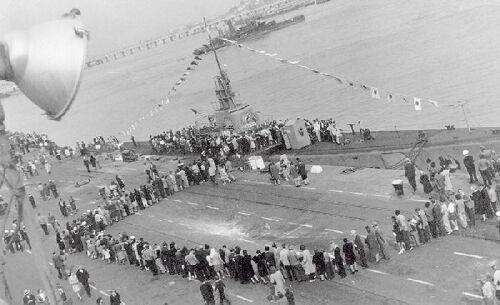
Tautog in San Franciso Bay after WW II. Kill flags fly from the periscope. On September 7, 1945, Tautog left San Diego and headed for San Francisco to join the Pacific Reserve Fleet. Her orders were subsequently modified, and she got underway on October 31, 1945 from there for the east coast.
An unknown sub is at the left edge of the photo, and at the top of the photo is most likely the USS S-32 (SS-137), under tow to be scrapped. This is likely the last photograph of the S-32. She arrived September 13, 1945 in San Francisco. The S-32 was decommissioned at Mare Island on October 19, and her name was struck from the Navy list on November 1, 1945.
Photo in the private collection of Ric Hedman.
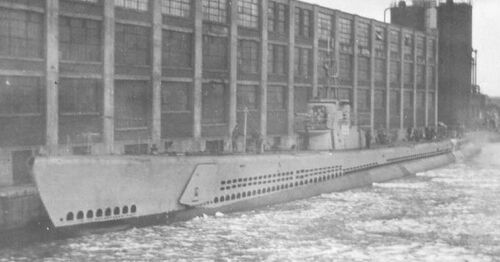
After the war the "Terrible T" continued to find useful service as a training ship for Naval Reservists. Here she is assigned to the 9th Naval District in Milwaukee, WI. In this role she was incapable of getting underway or submerging, but retained all other functions.
Photo in the private collection of Ric Hedman.
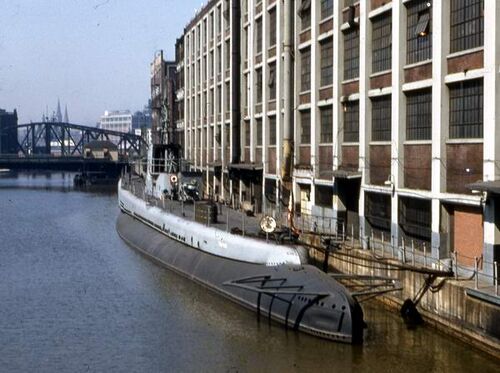
A view from Tautog's port quarter as she is moored at the Naval Reserve Center on the Milwaukee River, 1959. The reservists did a great job keeping the boat in shape and she gave them many years of good service.
Photo by Gilbert M. Bohannon, Jr.
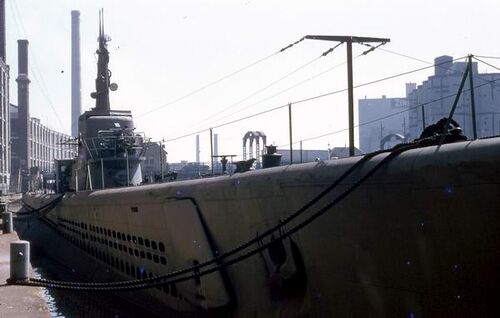
Tautog from the starboard bow, 1959. The building she was moored at was most likely on N. Water St., but has likely been torn down since then.
Photo by Gilbert M. Bohannon, Jr.

A closeup of Tautog's after deck. The care given to her by the reservists is evident. The aft torpedo room hatch looks new.
Photo by Gilbert M. Bohannon, Jr.
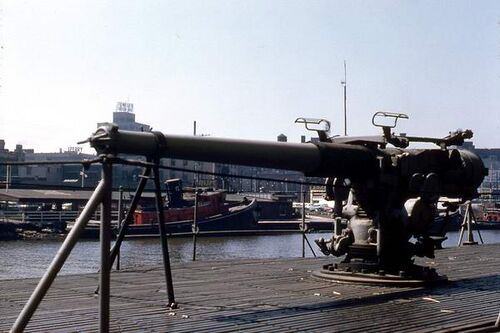
A fine view of Tautog's 4"/50 caliber Mk 9 deck gun. The gun remained full operational and was used to train Gunner's Mates. However it was never fired once the boat was entered into reserve service.
Photo by Gilbert M. Bohannon, Jr.
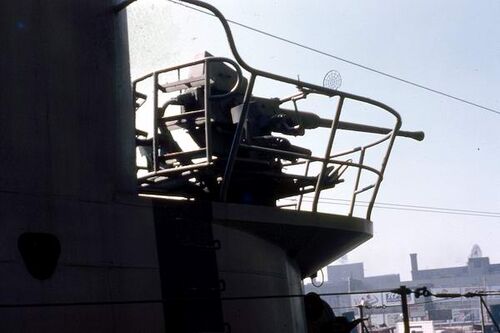
One of Tautog's 40 mm guns on her forward fairwater gun deck, 1959. Although this weapon is based on a Swedish Bofors design, it was heavily modified for production by U.S. manufacturers, one of the largest being Chrysler. It was a multipurpose weapon. It could be used in an anti-aircraft role, but mostly found use against small Japanese wooden cargo vessels and coastal luggers. The Mark 1 version had the ammo fed from the left side, the Mark 2 was fed from the right. The mount was the Mark 3 Mod 5 or 6, specifically for submarines. It was rugged and hard hitting and gave our submarines an important increase in surface firepower.
Photo by Gilbert M. Bohannon, Jr.
This video highlights the scrapping of the Tautog in Manistee, Michigan between 1959-1961. A sad end for a fighting submarine.
Page created by:
Ric Hedman & David Johnston
1999 - 2023 - PigBoats.COM©
Mountlake Terrace, WA, Norfolk, VA
webmaster at pigboats dot com
